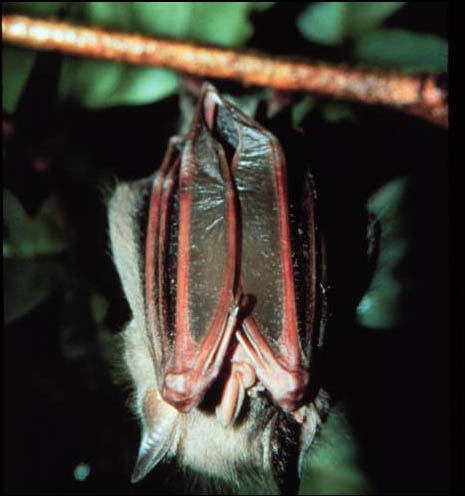Facts About Red fruit bat
The red fruit bat, also known as the red fig-eating bat, is a fascinating species native to Puerto Rico and the U.S. Virgin Islands. It belongs to the family Phyllostomidae and is the sole species within the genus Stenoderma.
These bats exhibit various colors, ranging from tan to dark brown. They feature distinctive characteristics such as red or pink arms and fingers, lace-like nose leaves, and small, oval-shaped eyes with brown irises. Interestingly, adult and juvenile red fruit bats show different colorations, with darker fur on their bellies than on their backs.
Three recognized subspecies of the red fruit bat exist: Stenoderma rufum rufum, Stenoderma rufum anthonyi (known only from fossils), and Stenoderma rufum darioi, also called Valdivieso's red fruit bat. In some subspecies, females are generally larger than males, showcasing sexual dimorphism.
Red fruit bats thrive in subtropical or tropical dry forests. They are found in regions such as Puerto Rico and the U.S. Virgin Islands, including St. John, St. Thomas, and St. Croix. Their diet chiefly consists of fruits like Cecropia schreberiana, Manilkara bidentata, and Prestoea montana. These nocturnal creatures feed on the exposed flesh of fruits and are undisturbed by moonlight, having few nocturnal predators in their environment.
Much about their mating and reproduction remains unknown. However, it is known that males tend to mate during the dry seasons, while females can mate throughout the year. The size of embryos and the characteristics of pups can vary with the season, with smaller embryos being more common during dry periods. Newborn pups are unique—they are covered in fur, have pink, hairless faces, open eyes, and specific measurements at birth.
